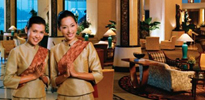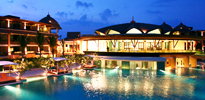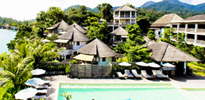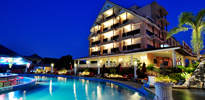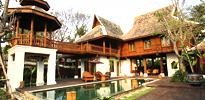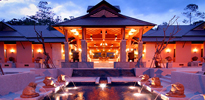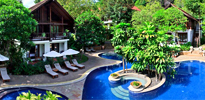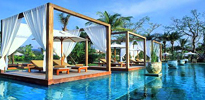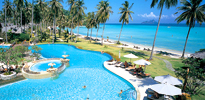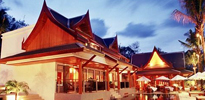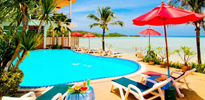Situated 700 km to the north of Bangkok, Chiang Mai is the second largest city and one of the most culturally significant cities of Thailand. It was founded in 1296 and once the capital of the Kingdom of Lanna, now is one of the oldest continuously inhabitances in Thailand.
Chiang Mai lies amidst the highest mountains of the country and along the Ping River, a main tributary of the Chao Phraya River, so it’s no surprise when it is the most fascinating destination with its own sights and charms in the picturesque Northern region. Chiang Mai has preserved a lot of unique cultural heritage sites with hundreds of ancient Buddihist temples and monuments as well as the unique arts and architecture collections in the region. It is well-known for its stunning mountain landscapes, cool climate, friendly people and refined handicrafts.
Chiang Mai stands out for its largest center of cottage workshops in the world. It hosts a variety of traditional handicrafts transferred from generation to generation, which are silverware, celadon pottery, lacquerware, hand-painted paper, silk and cotton, etc. So here is also a shopping paradise for shoppers with various goods and products, you can buy anything for gifts and souvenirs. Beside shopping, you also visit workshops or handicrafts villages like Bo Sang to witness the making of crafts.
The region is also flourished with various colourful hilltribes in the highlands, which consist of 7 main tribes, including Meo, Yao, Karen, Lawa, Lahu, Lisu and Akha with its own distinct lifestyle, culture, language and dress style. The local people are very friendly, hospitable and still hold traditional values. Chiang Mai, a relaxing place with frenetic air, is the perfect base for excursions to the other sights and attractions. The “Golden Triangle” is a wonderful attraction which lies in the borders of Thailand, Laos and Burma. So it’s no surprise as people call it “The Rose of the North”.
Chiang Mai has been modernly developed with excellent range of facilities to offer as hotels, restaurants, and entertainment. Hotels contain from deluxe to standards properties, supply accomodation to suit all budgets and tastes. Restaurants, with varied national cuisines and spicy northern taste, are abundant. Sometimes each meal is accompanied by traditional northern music and folk damces performances. This region is also an ideal place for shoppers to hunt bargain items in the famed Night Bazaar.
To discover the picturesuqe natural charms of the North, tourists will join in a jungle tour which may be on foot, by elephant back, by jeep or by river rafting. You also have chance to explore the tribal life by overnighting in the jungle. The tour can last some days to some weeks, be accompanied by a guide or not. For those who have little time, they can take a long-tail boat to experience the jungle scenery.
Chiang Mai hosts various festivals as Chiang Mai Winter Fair (Dec 29- Jan 10, noon- late), Lanna Winter Fair (Jan 8-15), Phrae Sweet Tamarind & Red Cross Fair (Jan 9-15), Petchabun Bo Sang Umbrella Fair & San Kampheng Handicraft Festival (Jan 15-17), Ban Thawai Wood Carving Fair (Jan 29-Feb 4), Chiang Mai Flower Festival (Feb 5-7), Teen Jok Fair (Feb 6-8), Phra That Cho Hae Fair (Feb 25- Mar 1), Phra Buddha Chinart Fair, Thai Lue Tribal Legendary Fair (Mar 6-7), Lanna Arts & Culture Festival (Apr 2-6, Chiang Mai Songkran Festival (Apr 13-15), Sao Intakin Ceremony (May 18), etc. Each of them has its own typical traditional ceremony and customs which are plentiful and diversed.
In recent years, Chiang Mai has attracted over 5 million tourists each year, from 1.4 to 2 million of which are foreign visitors. It has also become a Creative City and ranks in the place of 24 on TripAdvisor’s list of “25 Best Destinations in the World”. So it is now an ideal destination for not only internal but external tourists all over the world.





























